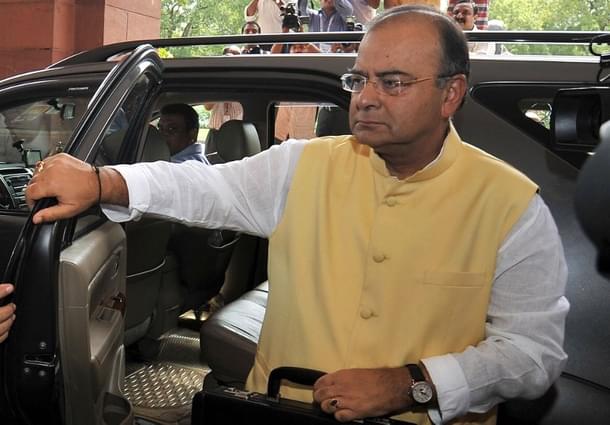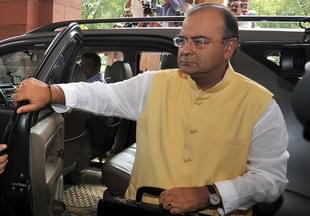Economy
FRBM Is Dead. The Next Fiscal Policy Must Be Both Rigid And Flexible
R Jagannathan
Feb 08, 2016, 05:58 PM | Updated Feb 12, 2016, 05:20 PM IST
Save & read from anywhere!
Bookmark stories for easy access on any device or the Swarajya app.


One of the biggest jokes unleashed on us by the finance ministry is the Fiscal Responsibility and Budget Management Act (FRBM), enacted towards the fag end of the Vajpayee government. The first thing the UPA did on coming to power was to modify it in 2004, and it did so again in 2008, both times by P Chidambaram. In UPA-2, when the deficit figure was again hitting the stratosphere, Pranab Mukherjee did nothing about it, but Chidambaram concocted yet another roadmap, and this is the one Arun Jaitley is working his way around with. He modified it last year, and this year finance ministry officials are mumbling about doing an encore.
What is the value of an FRBM Act if it can be mangled out of shape depending on political and electoral expediency?
The answer obviously is none. The FRBM is not worth the paper it is printed on unless it is made more meaningful and has some poison pills embedded in it to prevent arbitrary changes from year to year.
The question is whether we need a new FRBM, and, if yes, how it should be different from the useless one we have now.
If we accept that not having any kind of fiscal roadmap may lead to moral hazards as finance ministries then cannot be held accountable for waywardness, then some kind of restraint is vital.
The existing FRBM is pointless as it can be amended too easily; the new one should be written with tighter provisions, but yet retain flexibility so that fiscal responsiveness to potential economic catastrophe is not compromised.
Let us also acknowledge the illogic of any “expert-determined” fiscal deficit target. The assumption that 3 percent is the ideal fiscal deficit target to reach is arbitrary, as TCA Srinivasa Raghavan argues in Business Standard. Why 3 percent, and why not 2.5 percent or even 4.2 percent?
In my view, the ideal fiscal deficit should be around zero – as, after all, common sense tells us that we should not borrow to invest or consume.
However, zero too makes little sense because no government should be left with no tools to deploy if the economic situation so warrants. If the economy is falling sharply, would anyone recommend zero deficit?
Similarly, if the deficit is already near zero, and the economy is growing like gangbusters, why think 3 percent is ideal? We should think of generating a fiscal surplus.
What one is getting at is simple: the fiscal deficit target should be tighter when the economy is doing well, and loosen when it manifestly is not. The problem is how is one to decide when it is time to loosen or tighten? And who will decide it? If you leave it to the finance minister alone, he will decide based on electoral requirements – which is what UPA did in 2008, when it wanted to do a large farm loan waiver.
The ideal way to rewrite the FRBM is to make the conditions for tightening or loosening independent of the party in power. This means the FRBM must not state its objectives in terms of fiscal deficit targets from year to year, but in terms of the markers that should be monitored for any changes in FRBM targets.
For example, growth, inflation, tax revenue buoyancy, and savings and investment ratios could be key variables to watch. If, say, average GDP growth is upwards of 7 percent for six to eight quarters, the fiscal bite should be harder in the coming quarters (or years). So too, if inflation is above 6 percent for four quarters (or whatever economists think is the ideal period in which to monitor this variable).
This means the fiscal deficit target will be flexible, and dependent on underlying economic momentum. Just as the monetary target is currently monitored based on an understanding between the finance minister and the Reserve Bank of India (RBI), the fiscal target should be set for the medium term, with its trajectory (down or up) being more important than a specific yearly number. It is the fiscal deficit average for, say, three years (or rolling 12 quarters) that should be targeted, and not by financial year.
The stated goal should be to adopt fiscal policies to generate surpluses for the exchequer when the economy is growing strongly (as was the case from 2003-2010), and to cut the fiscal deficit sharply when inflation runs riot (as was the case in much of UPA-2). In the current scenario, where growth is indifferent (possibly under 7 percent if calculated using the old GDP methodology), inflation under control, and other indicators are showing very slow pick-up, a relaxed attitude to the fiscal deficit could be warranted.
But a decision on raising or maintaining the fiscal deficit target should not be that of the finance ministry alone. Just as we are going to have a monetary policy committee (where the Reserve Bank may have a majority) to decide on interest rates, we must have a fiscal policy committee where the finance ministry has a majority but includes the RBI Governor and possibly a couple of neutral economists too.
To sum up:
#1: We need an FRBM that is flexible and yet rigid enough to prevent purely political reasons for easing. The targets should be about achieving an average level over three years, and this three-year plan should be rolling, and adjusted every six months.
#2: The fiscal policy trajectory must be determined by a committee that includes the Reserve Bank Governor and an independent economist even though the finance ministry will have a veto, which it can exercise by giving reasons that should be placed in the public domain (as in the case of the proposed monetary policy committee).
#3: Broadly speaking, the medium term fiscal policy (three-year average) must target surpluses during periods of high growth, and can run deficits when growth is decelerating. But if growth is decelerating at a time of high inflation, the deficit should not be eased.
#4: Within the fiscal deficit, the priority should be to first ensure a zero revenue deficit.
The old FRBM is dead. We need a new one, a more sensible one, that is both rigid and flexible.
Jagannathan is former Editorial Director, Swarajya. He tweets at @TheJaggi.





